01:22
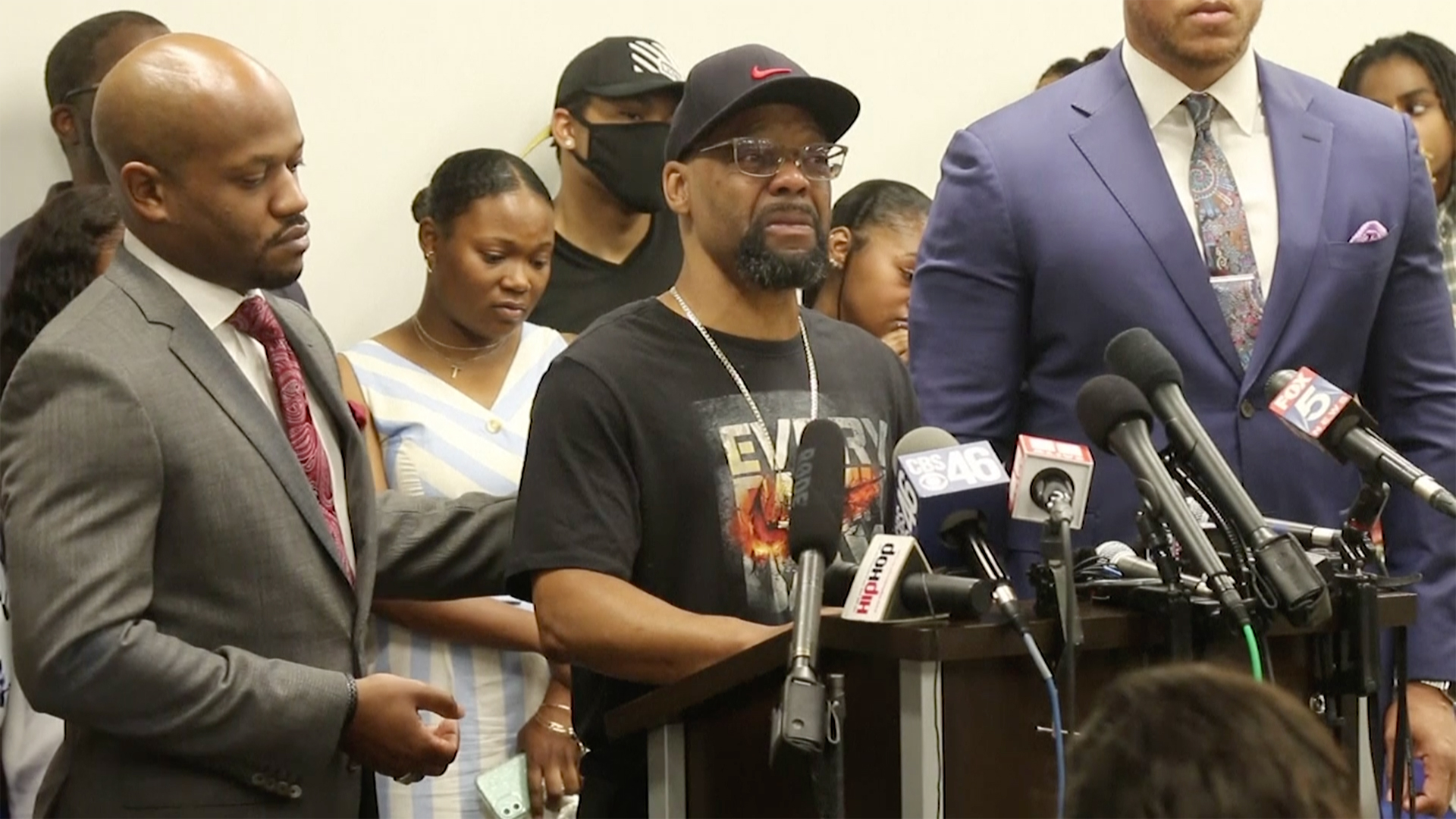
Protests in the U.S. have continued for almost three weeks since the fatal police choking of African American George Floyd in Minneapolis. Sparked by Floyd's death, protesters took to the streets around the country, and the rage has sprawled around the globe to other places where black lives suffer injustice and miseries.
Demonstrators keep repeating Floyd's last words "I can't breathe," which echoes Eric Garner who was choked to death six years ago in New York City, and their cry for justice has now become a plea for police reform.
On June 12, New York Governor Andrew Cuomo signed a sweeping package of bills aimed at combating police misconduct, including a ban on the use of chokeholds and one allowing the release of officers' long-withheld disciplinary records. South Carolina Senator Tim Scott, the Republican leading a group of GOP senators on police reform amid the heartbreaking national protests, said Sunday that he thinks "Democrats and Republicans will agree on some form of legislation" to address the calling of reform to policing and ban on chokeholds as well as no-knock warrants during drug investigations in the U.S.
The killing touched off unprecedented nationwide demonstrations against police brutality and systemic racism in the U.S., but can it somehow bring a hopeful spirit and tear down the long-existing racial wall?
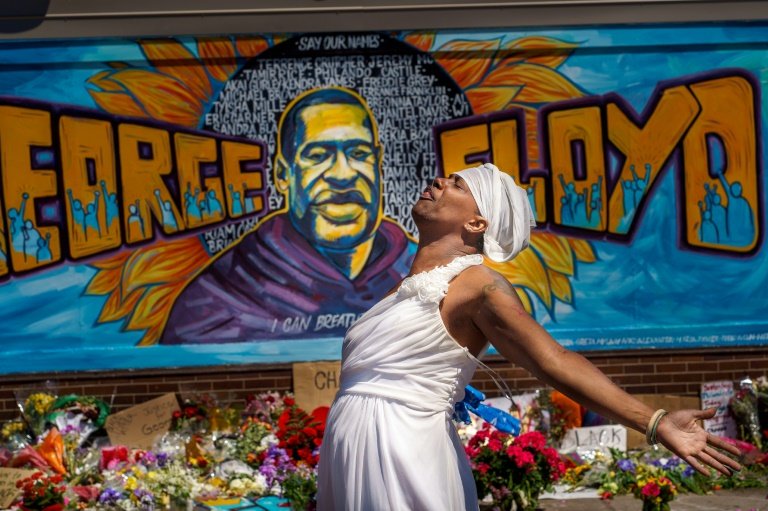
Protests in the U.S. have continued for almost three weeks since the fatal police choking of African American George Floyd in Minneapolis. /AFP
Protests in the U.S. have continued for almost three weeks since the fatal police choking of African American George Floyd in Minneapolis. /AFP
'If it's not here, it can be anywhere'
People in Minneapolis-St. Paul and its suburbs, commonly known as Twin Cities, are usually proud of their high quality of life, good economy and low living costs. Yet the metro area saw thousands of protesters in the past weekend, not only in Minneapolis, but in more and more suburbs like Edina, Woodbury, St. Louis Park and Shoreview.
"I would never believe such a protest can happen in here," said Yun Jia, a Chinese financial engineer who studied at the University of Minnesota Twin City campus between 2013 and 2015. He remembers the city as being full of friendly neighbors, promising young people and having a peaceful vibe. "I admit there are a certain level of racial issues between different communities, but the region is definitely the most harmonious one with quality neighborhood I've ever seen," Yun said, adding that many dining places and stores were smashed and looted in his old neighborhood this time, but the protest just adds to the outrage.
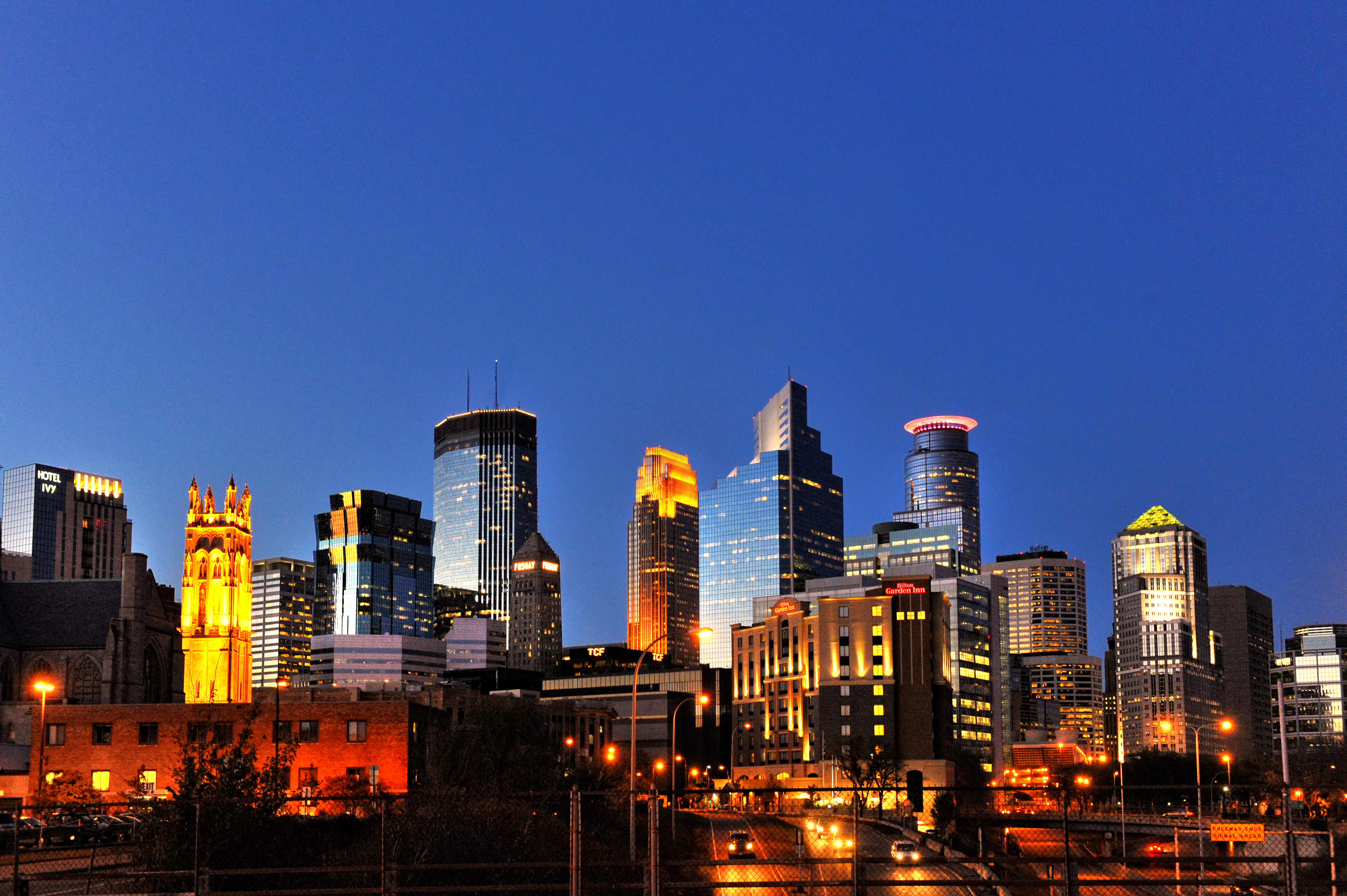
Minneapolis-St. Paul and its suburbs, commonly known as Twin Cities, is an area known for its high quality of life, good economy and low living costs. /AFP
Minneapolis-St. Paul and its suburbs, commonly known as Twin Cities, is an area known for its high quality of life, good economy and low living costs. /AFP
African Americans make up 19.4 percent of the state of Minnesota. According to OpenDataMinneapolis, a website with GIS data and non-spatial data provided by the city of Minneapolis, since 2015, the Minneapolis police have documented using force more than 10,000 times, and at least 6,650 of these incidents involved black people.
George Floyd's killing at the hands of the white police officer Derek Chauvin is again sparking intense scrutiny of the Minneapolis Police Department—an institution long plagued by allegations of misconduct and racist abuse. This is not the first time a local district has vowed to overhaul its police system, and Floyd simply was not the first African American whose treatment triggered a national outcry targeting law enforcement officers. Police violence is like a scar: every time it is almost healed, incidents of misconduct brutally scratch it open again. in 2015, a Minneapolis police officer killed 24-years-old African American Jamar Clark, who worked for a local trucking firm; then in 2016, the police officer Jeronimo Yanez fired seven shots at Philando Castile, who was pulled over and did nothing threatening the officer.
"I dealt with police officers here several times, mostly being pulled over or for my students' issues. I mean, the officers didn't do things as reckless as the chokehold, but they do have an attitude problem sometimes. I don't know if it is because of my race or my behavior, I just felt very uncomfortable," said a Chinese-American professor at University of Minnesota.
Actually, in August 2016, the Minneapolis Police Department issued a new policy that said officers had a duty to intervene when fellow officers use excessive force. The department also rewrote the policy prioritizing the "sanctity of life," and made changes in its hiring practices. Even though the reform won praise nationwide at that time, it left some important steps unfinished within the core of the changes.
"It's a tragedy that could happen anywhere in the U.S., as the structural issues are dividing society in a relentless way," said Yun, adding that Minnesota just got ripped up for the first time by the heartbreaking death of Floyd.
Codes of brutality
People ask why the fatal cases keep happening, and why no one is being held accountable.
"16 shots and a cover-up. What?" were the words protesters chanted on Chicago streets when Laquan McDonald was shot 16 times in 2014 by a police officer named Jason Van Dyke. They accused the police department of covering up the footage and even demanded the then-Mayor Rahm Emanuel to resign.
"It is this tendency to ignore. It is a tendency to deny. It is a tendency, in some cases, to cover up the bad actions of a colleague or colleagues," said Emanuel later on TV, calling the problem a "code of silence."

Floyd's funeral was held in Houston, Texas on June 10. /Reuters
Floyd's funeral was held in Houston, Texas on June 10. /Reuters
Cover-ups are seen in post-incident procedures as well. Without the video, almost nobody would know that the last few words Floyd said before he died were "I can't breathe." Even with the video which obviously shows that this black man was experiencing breathing difficulties, the charging document of Derek Chauvin, the officer who knelt on Floyd's neck, says the autopsy "revealed no physical findings that support a diagnosis of traumatic asphyxia or strangulation" and Floyd's inherent heart disease may have caused the death.
This finding contradicts what the medical examiner hired by Floyd's family found, who specified asphyxia as the cause of Floyd's death. A week later, the latest autopsy report provided by the Hennepin County concluded that this fatal tragedy was due to "cardiopulmonary arrest complicating law enforcement subdual, restraint, and neck compression" and the manner of death is homicide.
Minneapolis Mayor Jacob Frey told local media this week that the restraint used on Floyd was an unauthorized tactic and should never have been used. However, the militarized police training for years has been popular with the city's top police union, and many forms of brutal conduct can be traced back to what the officers learn at police academies.
According to the census done by the Bureau of Justice Statistics in the U.S., the average training hours of firearms skills and defensive tactics required per recruit in state and local law enforcement training academies is about 60 hours. Yet courses related to crisis management, such as negotiations and communications, barely feature in the training hours and make up too little to be annotated. Even during the nationwide Black Lives Matter movement, the average training length for firearm skills increased from 63 to 71 hours, while there was an 11-hour drop in criminal and constitutional law and a six-hour decline in patrol procedures.
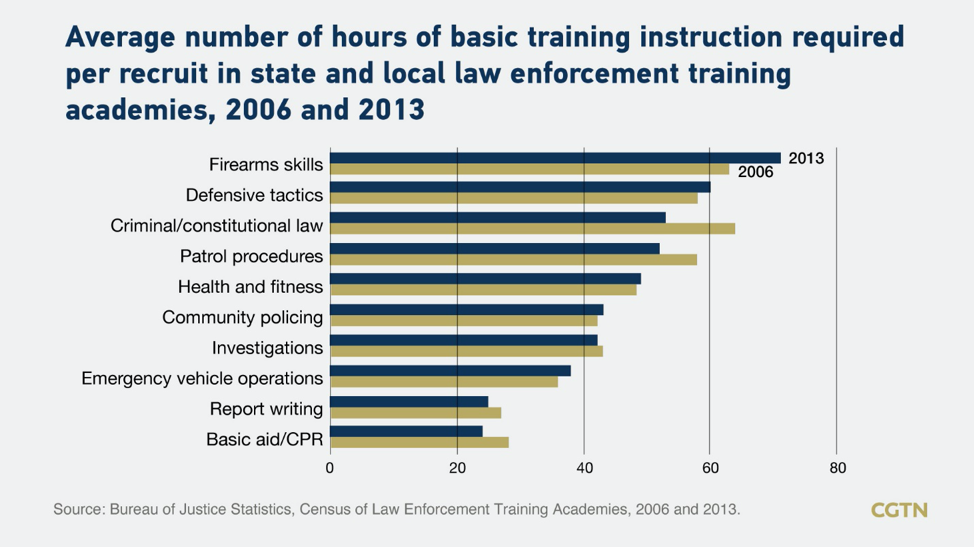
Standoff
What civic leaders will do next is not clear. And how long the protests will last is also a question mark.
Darrick Hamilton, executive director of the Kirwan Institute for the Study of Race and Ethnicity at Ohio State University, said that the U.S. has a political economy that "permits a devaluation of black lives so that people can see incidents like that."
00:47
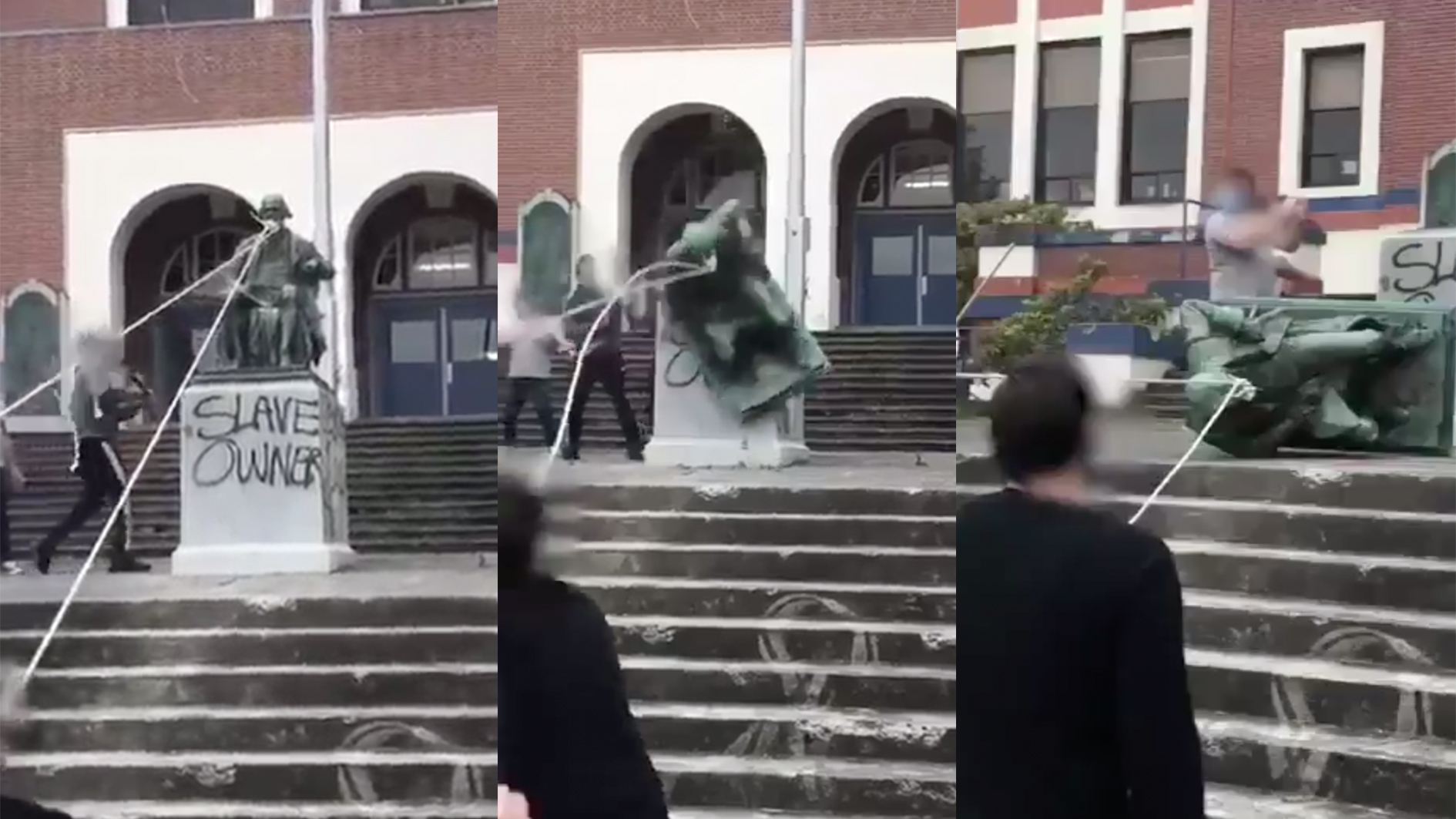
Hardly surprising, when gloomy economies, militarized police and abusive misconduct combine with racism. There is was Laquan McDonald, now George Floyd, and many other black names that kindled outrage nationwide - Eric Garner, Terence Crutcher, Samuel DuBose, Freddie Gray, Jordan Edwards - who together push for political upheaval and policing reform to the edge of a dividing gap, with blood and tears.
"African Americans, in general, are worse off than other race by almost every economic measure," said Jack Lee who's studying community relations and race development at Columbia University. His observation is the divide has only deepened during the COVID-19 pandemic, and the long-existing gaps in every aspect of the society have finally ignite the rage around the country. "When the country comes to its worst economic downturn in decades, you cannot expect disappointed people to be calm and optimistic, not only the back community, but everyone."
Cover image designer: Yin Yating